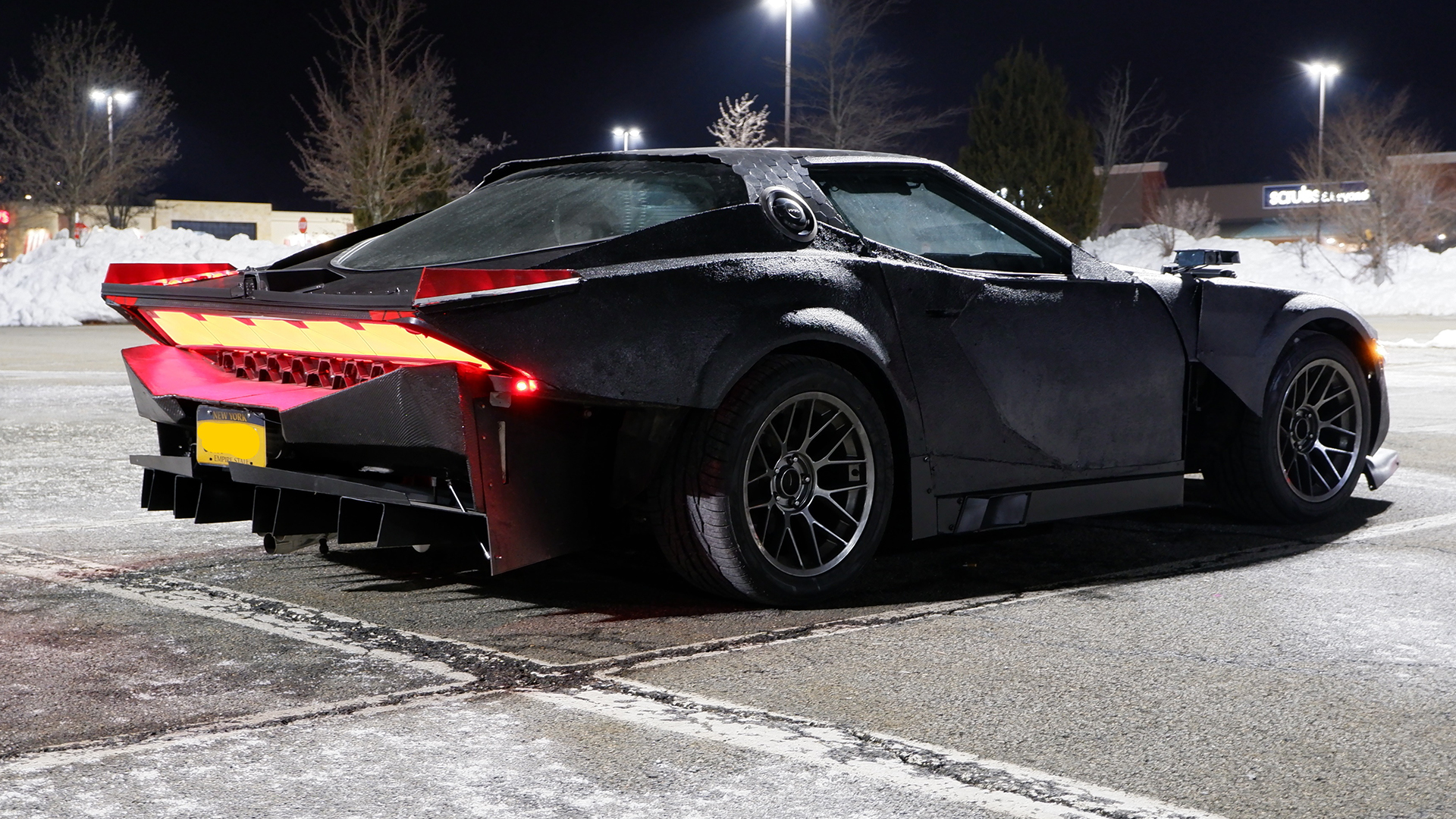

In a world where bolt-on fender flares, wide wheels, and an off-the-shelf tune make any car a “build,” we rarely get to see genuinely innovative creations born from someone’s garage. So when I came across Darius Crawford’s post on Reddit featuring his rebodied C4 Corvette built from not one but nine different cars, I knew it had to be shared with the world.
In 2012, Crawford was enrolled at the College for Creative Studies in Detroit where he studied automotive design. He quickly realized that he didn’t love the industry like he thought, and found his calling in video game concept art design instead. But he still sketched out a number of designs for a car—his car—that he’d one day sit behind the wheel of.



Crawford settled on a 1989 Chevrolet Corvette as a donor car after seeing Roadkill pull the body from one and turn it into a kart. He began the process of kitbashing, or using 3D models of popular cars ripped from video games, to create a digital representation of his vision based on early sketches. Eventually, he had an idea of how to make his vision a reality using nine different cars, some PVC fence posts, garbage can lids, and garden pavers.
Under the hood, the C4 would keep its original powerplant; its exterior, though, got a full makeover.
The front bumper of the car is plucked from a BMW i8, but rather than mounting it conventionally, Crawford flipped it upside down. The front splitter is also inverted, and it’s actually made from the original C4 bumper after he cut it in half—Crawford said he’s quite proud of that in particular. And to tie it all together, the headlights from a Hyundai Kona sit rather purposefully in the front bumper with the fog lights from a Polaris slingshot mounted on the splitter.
Crawford told me he originally wanted to make the headlights hood-mounted, but nothing he bashed together quite seemed to work with the hood profile. That’s partly because the hood and fenders are sourced from a stock car parts kit by ARbodies that doesn’t use headlights at all. He did put the mirrors on the hood, however, while mounting rear-facing cameras to an RC car chassis from a company called Arrma.




Moving towards the rear of the car, you’ll find the lower side vents from a Fiat X1/9 underneath the doors. These flow into carbon castings made from a C3 Corvette rear clip, one of which has a Dodge Challenger fuel cap to break up the large panel.
Above the casting is a rather interesting pattern leading up to the roof. Crawford covered the factory targa top—including the glass, more on this later—with hexagon-shaped aluminum kitchen backsplash tiles.
Now, the back of the car is a real achievement. The rear glass is from a Trans Am and it leads to a custom…well, literally everything. Both carbon fiber and alumalite were used to shape the rear and its corresponding aerodynamic bits, and the quad-tip exhaust is made from a header collector mounted backwards. A unique hexagonal pattern bears the car’s name, “Amalgam,” which is nestled below an ultra-modern tail light made from Nanoleaf LED panels.




Crawford also used the body’s design elements to craft the car’s lighting ever-so-perfectly. Many elements are hidden in the bodywork, like the sequential blinkers and brake lights which use louvers to project the reflection towards the rear of the car.
Earlier, I mentioned that the roof had its original glass left in place when it was covered by the backsplash tiles. This allowed Crawford to use reflections to his advantage. In the interior of the car, he’s able to project the camera feeds from the hood-mounted mirrors onto the glass ceiling using the reflection of two displays mounted in the car. This lets him peek upwards from his driver’s seat—which is from a Polaris Slingshot—to use his digital mirrors.



The design of the aptly named Amalgam drew inspiration from some of Crawford’s favorite concept and production cars. The rear, when viewed from above, clearly takes inspiration from the Alfa Romeo BAT 9. The car’s side profile was channeled from the Lancia Stratos, and its swooping B-pillar from the Datsun 280Z.
For fun, I asked Crawford to name some of his favorite automotive designers. He appreciates those who dabble heavily in futuristic concepts, like Daniel Simon, who worked on the cars from Tron and the Singer DLS, as well as Syd Mead, who is known for his Future Bugatti concept art and work on sci-fi movies like Blade Runner.
Crawford said that his cyberpunk-styled Corvette really speaks to his agnostic view of not aligning his brand loyalty with any single automaker. It definitely turns some heads while on the road, too. When people ask him what kind of car he drives, he’s happy to explain what the Amalgam is: a little bit of everything.
Got a tip or question for the author? You can reach them here: Rob@TheDrive.com